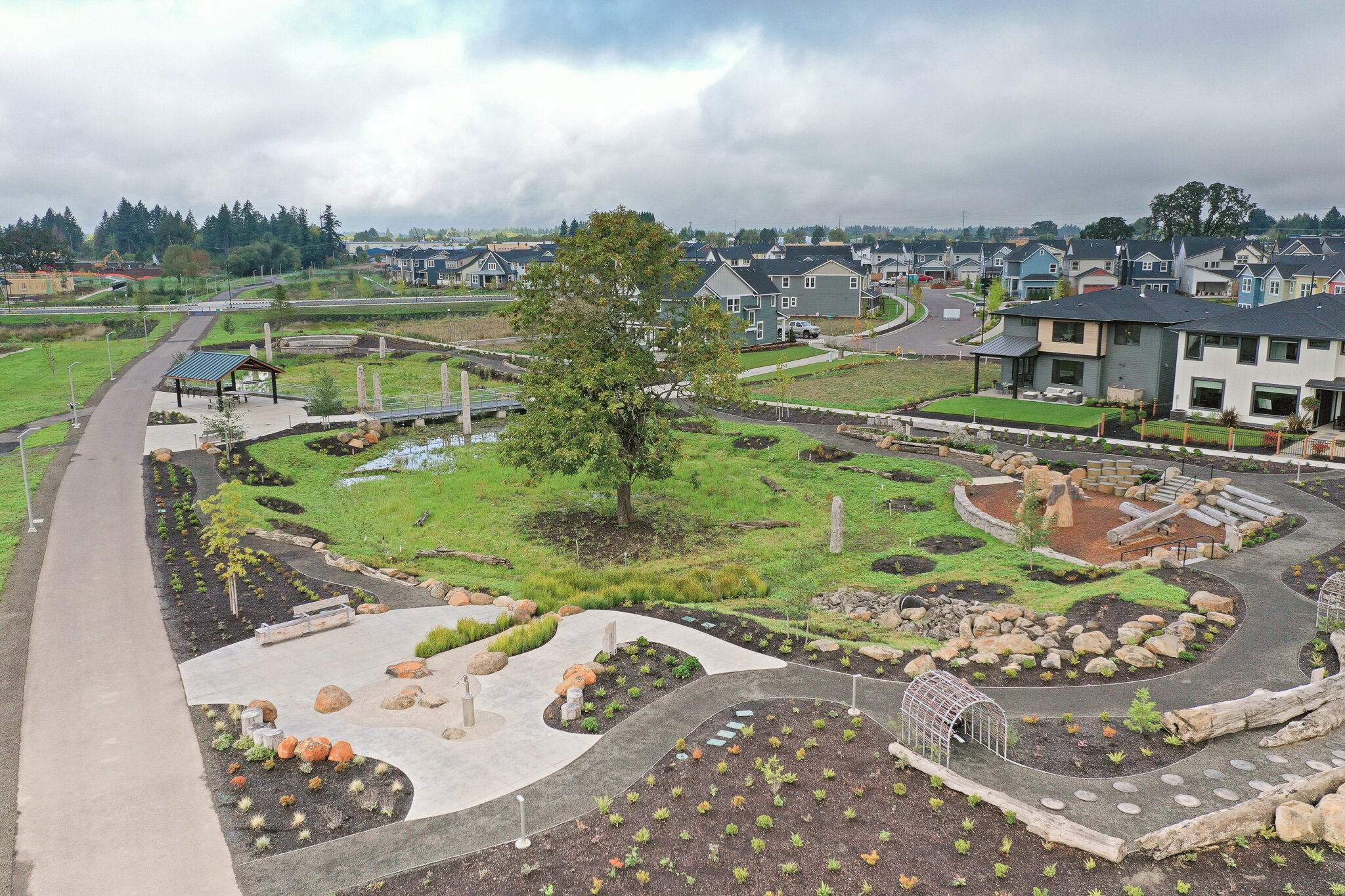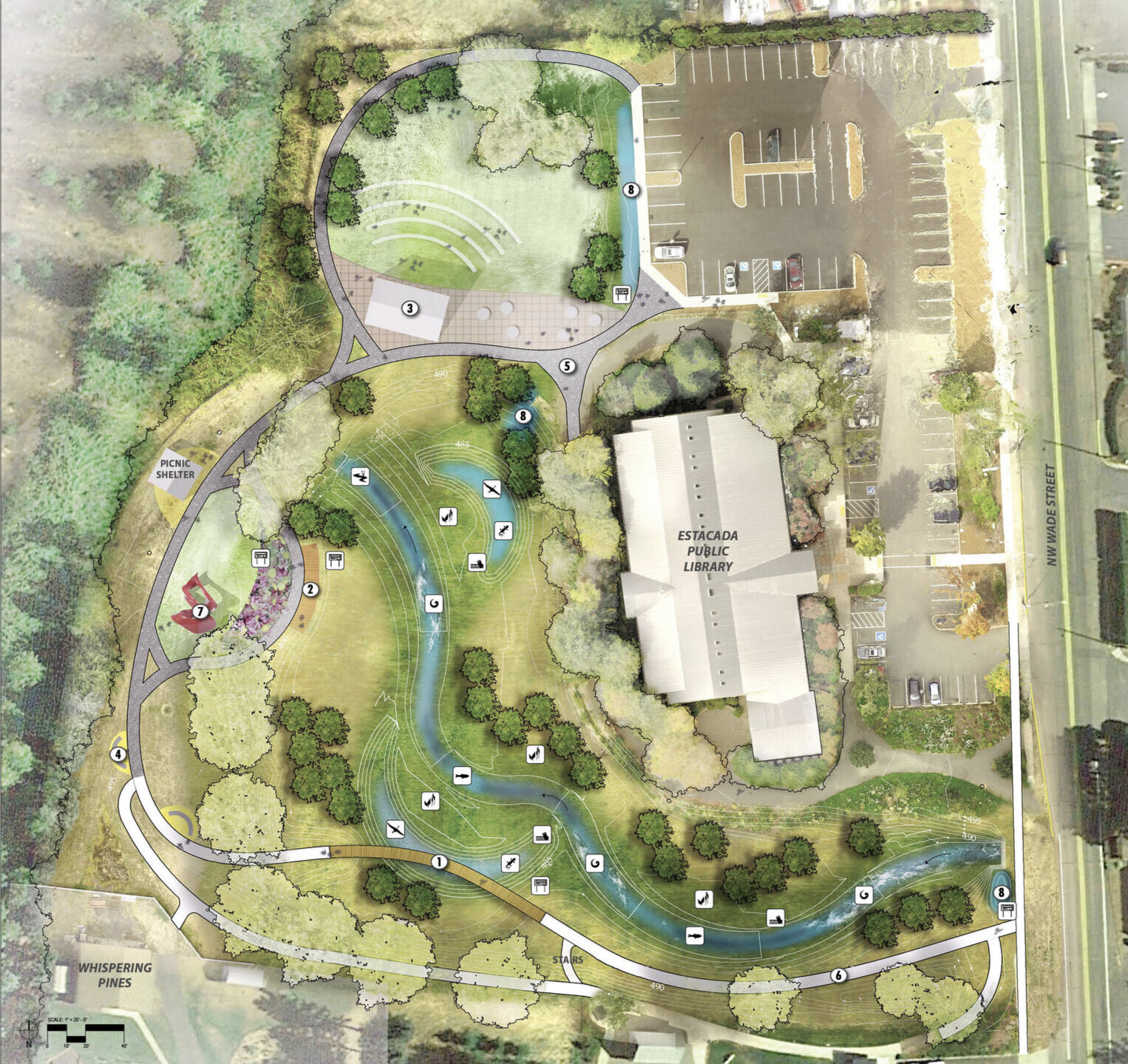Jennifer D’Avanzo Named Associate Principal
/Jennifer D’Avanzo is a Project Manager, Landscape Designer and Biologist with almost twenty years of experience working for environmentally-focused firms. We’re proud to announce she’s been promoted to Associate Principal here at GreenWorks.
Jennifer’s a certified professional wetland scientist and her work focuses on collaboration with agencies, parks districts, and engineers on challenging ecological projects that connect people with nature through design.
Jennifer sits on the board of the community-based nonprofit Depave and is a recipient of the American Society of Landscape Architecture Award of Merit for Excellence in the Study of Landscape Architecture. In light of this exciting development in the life of our firm, we wanted to share an interview we did with Jennifer last week.
GW: You have a strong background in biological sciences and you’re a certified wetland scientist. How do you think this background has shaped the way you practice landscape architecture and manage projects?
JD: My career started as biologist where I worked for large environmental consulting firms (1,000 to 13,000 people). For a few years I was in the field more often than I was in the office. Some examples include being in the Louisiana wetlands recovering hazardous materials during Hurricane Katrina and Rita responses or walking sagebrush expanses conducting wetland and biological surveys for energy projects. The experience I gained, aside from wonderful memories and amazing friendships, was a keen eye for reading landscapes, conducting biological assessments, and knowledge of flora and fauna across the Pacific Northwest and the Great Basin. When not in the field, I was writing environmental impact statements and permits. As my career progressed, I became a task manager assisting with organizing field crews (sometimes up to 30 biologists), preparing documents for field surveys, coordinating with agencies, and compiling large reports and permits. My past experience has shaped me as a successful project manager, due to the nature of those projects with fierce timelines and working with large multidisciplinary teams.




GW: How would you describe your design philosophy?
JD: I do not separate biology projects from landscape architecture projects because projects that detail wildlife habitat enhancement or human interaction involve a well-thought-out approach and technical studies of biological processes that coalesce into a sustainable design. GreenWorks is the ideal firm for my background in biology and landscape architecture because many of my projects focus on the enhancement and restoration of natural systems while embracing a community connection to nature.
GW: What are a few of the most valuable lessons you’ve learned on projects throughout your career?
JD: Communication is the biggest one. This is the key to everything, including a successful project, career, and firm.
Lately I been working on slowing down and listening. Maybe my past experience was good for project management, but it was not great for taking it all in, due to the fierce schedule I was maintaining.
With our current work at home situations, we need to listen more, as well as communicate more. We need to be thoughtful with our words, intentions, and design. We need to listen and hear everyone’s voices.
GW: Can you tell us about a few notable projects you’ve worked on? What made them meaningful and important?
JD: Those would be Reed’s Crossing Greenway in Hillsboro, Wade Creek Park in Estacada, and Mirror Pond Trail and Bank Improvement Project in Bend.
Reed’s Crossing is a master planned community developed by Newland Communities in Hillsboro Oregon. The 460-acre site will be constructed over the next 15 years and will consist of residential development with associated roadways, utilities, stormwater facilities, trails, parks, and open space. GreenWorks worked collaboratively with the Newland, the City of Hillsboro Parks Department, and project civil engineers to design the heart of the development, the 23-acre greenway. The greenway is comprised of approximately 12-acres of stormwater facilitates that cleanse water running off the roads and rooftops of the new development during rain. These stormwater treatment facilities seamlessly incorporate into the landscape and enhance the design of the development’s neighborhoods and civic spaces. The greenway links the community both internally and to adjacent neighborhoods by the multimodal trail network traversing the site. It also supports riparian habitat, passive and active recreation, and open space preservation.
This project is meaningful to me in a few ways: it’s one of the first projects I worked on at GreenWorks and continue to work with the client on other parks within the development, the specific team I work with at GreenWorks on the project inspires me to do my best, and the project incorporates both biological sciences and landscape architecture. The greenway is now complete and has proven to be a wonderful community connection.



Wade Creek Park is the City of Estacada’s vision of turning a man-made pond located behind the Estacada Library into a flowing stream. GreenWorks has been working with the City of Estacada since 2018 on Wade Creek Park Phase 3, from master plan through design development documents and construction documents. GreenWorks and sub-consultants are designing a new channel that will provide pool-riffle habitat for resident trout and other aquatic species. Two deteriorating culverts are being replaced to help with fish passage and flooding, and the pond will be graded to eliminate steep slopes and create an active floodplain along the new channel that will increase the biodiversity. During master planning, the community said they wanted an enclosed building to compliment library activities and events. The team has included that community building with an amphitheater in the design. The effort also includes a road widening project to conform with the City’s current transportation plan. This project has been challenging due to the diversity of components: stream restoration, road improvements, an architectural building, a park, and permitting. The City has been great to work with and, as the project manager, it is such a pleasure to see this place coming together. We are in our final phases of design with the construction schedule set to begin the spring of next year.
One final project worth mentioning is the Mirror Pond Trail and Bank Improvement Project in Bend. I like this one because it’s an iconic park and will be even more of an asset to the City of Bend once the project is completed. Also, it has been a permitting hurdle that we are still working through. There is always something to learn!
The project area is right in downtown Bend at Drake Park. GreenWorks, with sub-consultants, is working with the Bend Park and Recreation District to repair failing systems along the river, connect and extend the Deschutes River Trail, address ADA, mobility and access, and create and enhance habitat. The project site is in the heart of downtown Bend along the bank of Mirror Pond and the Deschutes River. Drake Park is a popular downtown community gathering place and is highly used by floaters, runners, cyclists, pedestrians, and others—and sometimes there can be conflicts between these different types of users. The GreenWorks team has creatively designed an accessible route to connect the Deschutes River Trail from Pioneer Park downstream through Pacific Park, where it meanders on back surface streets until it reaches a new boardwalk at Newport Bridge. Banks along the river are eroding and maintenance is continually required. The GreenWorks team, along with stakeholders, worked to determine that the banks should not to be armored with rip rap, but that erosion and maintenance issues should be addressed while enhancing habitat. The solution involves the removal of the concrete cap on top of the wall, deconstruction of banks and reuse of the rock in place, and adding riparian plantings. A split rail fence will be installed to deter the trampling of vegetation, allowing vegetation to remain in place for the enhancement and creation of habitat.
GW: What are you hopeful for in the coming years at GreenWorks?
JD: My goal is to continue to strengthen the GreenWorks portfolio in natural resource projects and connecting people with nature. We know our natural and open spaces are crucial to our health and well-being. Now that we are in a pandemic and issues of social justice are finally being scrutinized, natural areas and access to these spaces are more critical for all. To help us better our firm and practices, GreenWorks started equity, diversity, and inclusion training early this year. We have continued the training after we retreated to work at home due to the current pandemic. We formed a committee in response to the trainings, because the learning is a lifetime practice and we committed to embrace the work we need to do. My hope is that these trainings and our continued efforts will propel us to diversify our projects, community outreach, and recruiting practices.


